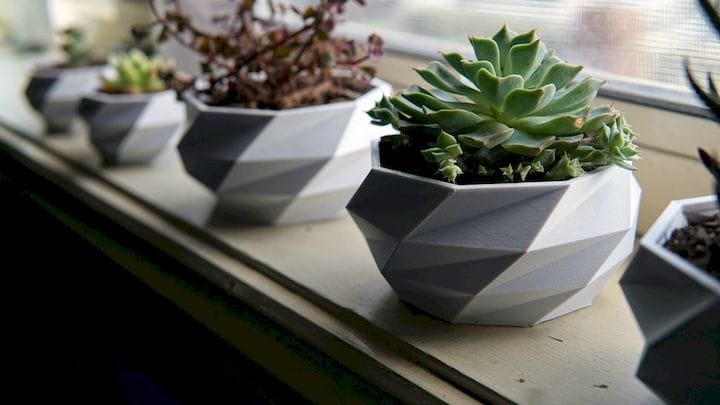![Designing stuff in SelfCAD [Source: SolidSmack]](https://fabbaloo.com/wp-content/uploads/2020/05/image-asset_img_5eb09e1e89379.jpg)
If you’ve yet to get your CAD jabbers on SelfCAD, you can spin it up and start modeling in less time than it takes to juice a pack navel oranges with your elbows at your co-worker’s desk–Tis a fact.
SelfCAD is the web-based modeling/sculpting/3D printing tool that works in all modern browsers and on Windows, Linux, or Mac. Last time I looked at it, they were just getting started. Now, they’re on SelfCAD 2.0 with more sculpting brushes, modeling tools, and all-new selection modes.
They’ve also started releasing content daily to help you better understand SelfCAD, the tools, and the crazy-simple user interface. Over Christmas, they released a series of videos showing how to create various low-poly models and just published another featuring the new Selection Modes, which we’ll take a look at below.
How To Use SelfCAD Selection Modes to Create Unique Low-Poly Designs
It’s not the prettiest shoe but does show the various selection modes in SelfCAD.
Creating a low-poly object can be a quick, fun, little exercise to churn out basic concepts or create a wee bit of interest in a 3D print. Do a search for ‘low-poly’ on Thingiverse or MyMiniFactory and you’ll find all sorts of cool ideas–some practical, others completely useless, but all relatively easy to create.
Here’s the approach you would use in SelfCAD to generate a similar low-poly design quickly and have everyone ask, “How’d you do that?”
Add Your Segments (Subdivisions)
![Adding segments in SelfCAD [Source: SolidSmack]](https://fabbaloo.com/wp-content/uploads/2020/05/image-asset_img_5eb09e1ed3085.jpg)
SelfCAD has a pretty slick approach to splitting up your solid model into segments, or what is often called subdivisions in subdivision surface modeling.
After adding a 3D shape, you’ll see a set of sliders in the left sidebar to add various width/height/depth segments (or faces). Adding more segments, creates more divisions, and each division is made up of edges and vertices. The more edges and vertices, the greater number of selections you have available to modify the shape, and the greater amount of detail you can add to the shape.
Select and Modify Faces/Polygons
![Manipulating faces in SelfCAD [Source: SolidSmack]](https://fabbaloo.com/wp-content/uploads/2020/05/image-asset_img_5eb09e1f19ac3.jpg)
With the segments visible, you can now start to modify your shape using the available selection tools. In the right sidebar, you’ll see an illustration that acts as both a guide and the selection tool.
Click Polygon to select an entire polygonal surface and all of its contained segments/faces. Hover over the Polygon label to show a toggle for Face selection and then select Face to select any number of faces. Jump up to your Tools menu to Extrude the selected faces.
Select and Modify Vertices
![Modifying verticies in SelfCAD [Source: SolidSmack]](https://fabbaloo.com/wp-content/uploads/2020/05/image-asset_img_5eb09e1f5b81e.jpg)
Next, there’s the Vertex Selection Mode. Click Vertex in the sidebar illustration to activate vertex selection. Pick or box-select any number of vertices and select Move from the menu to adjust their location.
Read the rest at SolidSmack












1 comment
Comments are closed.